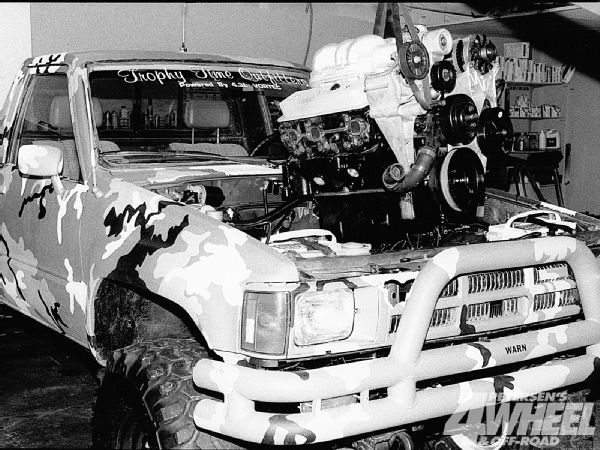
Toyota pickups and 4Runners, especially four-banger-powered solid-axle rigs, have a two-sided, Superman/Clark Kent reputation. If you own one, you already know what we mean. On one hand, the solid-axle Toys are mechanically bulletproof and can be made into awesome trail rigs that leap impossible obstacles in a single gear; on the other hand, they're grossly, almost ridiculously, underpowered.

The Toyota V-6 helps the powerless rep somewhat, but the new mills didn't debut until 1988, two years after Toyota switched to IFS. So, if you want both the super suspension and enough power to merge with freeway traffic on the way to the trail, odds are you've considered an engine swap.
This GM 4.3L V-6/TH700-R4 auto-tranny conversion first caught our eye when we were at Hi-Tech Automotive for our recent Holley Digital Pro-Jection installation (see "Digital Fuel Injection," Nov. '97). The overall buildup is a joint project between Rocky Mountain Off Road Specialties and Hi-Tech. Ken Carner and Chad Morse performed the engine swap for Sean Pond, owner of Trophy Time Outfitters in Grand Junction, Colorado. Pond wanted a powerful, reliable rig to get his hunting clients in and out of the most challenging backcountry terrain and still make great time on the highway.
PhotosView Slideshow


















